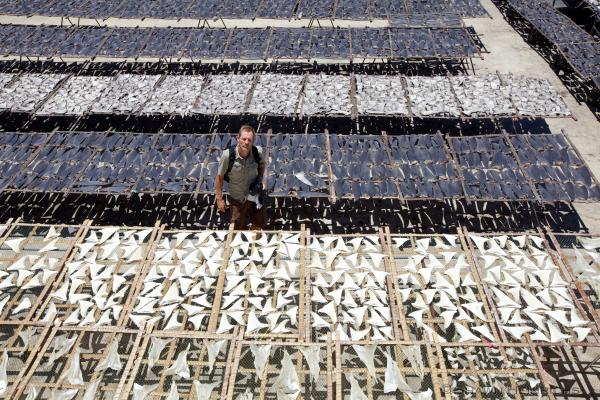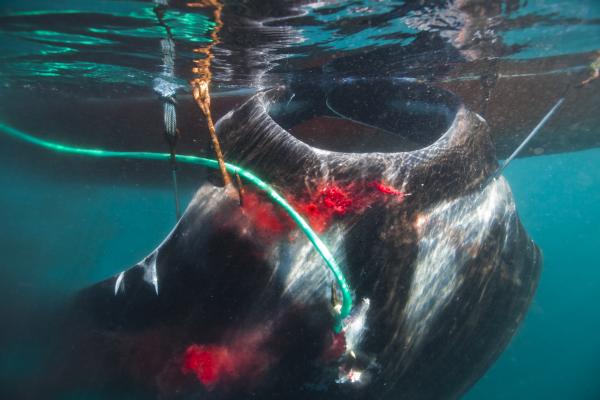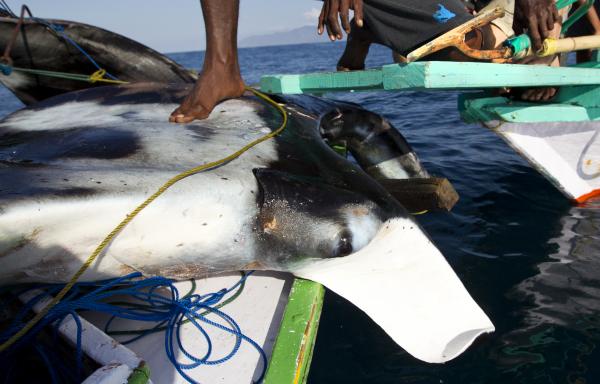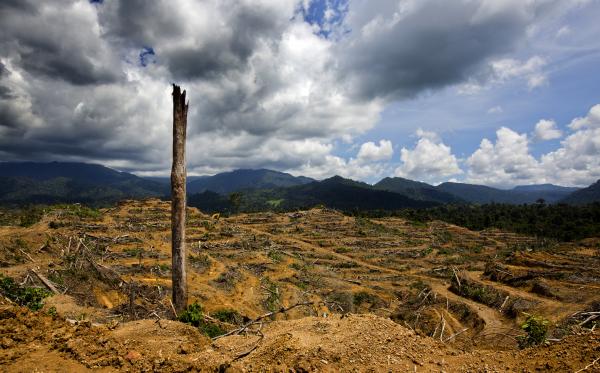From the red carpets of Hollywood to the jungles of Sumatra, the deep waters of the Pacific and Indian oceans and the sometimes, dangerous fish markets of Asia, would be a journey that would turn many an adventurous soul green with envy. But for Peregians’ Paul Hilton, international award- winning conservation photojournalist and wildlife crime consultant, this has indeed been life’s journey.
His love of wildlife and underwater photography, which has been the subject of his many awards, has been the reason for his extensive travels and his now obsessive campaign to bring public international attention to the barbaric, but lucrative world- wide business known as the Shark Fin Trade.
Because of his outstanding and deep commitment to conservation efforts around the world, Paul in 2009, became a member of the prestigious U.S. International League of Conservation Photographers: an elite group that is considered to be amongst the world’s best.
It was his first book, entitled Man & Shark which he launched in 2010, highlighting the global shark fin industry, that resulted in his receiving in 2012, World Press Photo award for his body of work, based on the Shark Fin issue. Then later that same year, he was awarded Wildlife Photographer of the year: an award he was to repeat in 2014 and again in 2016.This was followed by the Asian Geographic Best of the Decade Series and the Ark Trust Award, for exposing bear bile farming in China, for the Animals Asia Foundation.
Bear bile farming is a cruel farming system, designed to extract bile from the gallbladder of living bears. The bile is used in traditional Chinese medicine. His photos were published in the book, Black Market which deals with the wildlife trade in Asia and included investigative photojournalism, in the wild-animal markets and theme parks of China.
However, during the last decade, he has spent time following the shark fin trade across the globe, from the fishing ports of Yemen and the middle East to the high seas of the Pacific and Indian Ocean. He has also documented the dry seafood markets of southern China and Hong Kong and many other projects: cooperation with Wild Aid, Human Society International, Greenpeace International and the Hong Kong Shark Foundation.
For Paul, he first became fully aware of the shark fin trade when back in 2004/5, while walking the streets of Hong Kong, he noticed outside many shops, lots of shark fins in baskets and on asking questions he became deeply disturbed by what he learnt: he had in fact, stumbled accidentally on what was known as– the Shark Fin Trade.
Further discussions revealed that it was in fact not just a local business, but a multi- million-dollar business, spreading around the world, including Australia. Sadly, to cater for the increasing demand, it required the killing of an estimated 200 million sharks a year from all corners of the globe.
The fin is harvested by cutting it off the shark. Once removed, the shark is left to die: a practice known as finning. This is however illegal in Australia. When you consider that a kilogram of fin is worth $75, it is easy to understand why it has become a worldwide trade. A trade which in some places has, for investigative journalist, a certain degree of danger. It is no wonder, that the many photos taken by Paul, of several thousand fins laid out in various market places throughout the world, has resulted in public outcry: it has also been the reason for his many photographic awards. Also, as a side business, there is a definite increase in demand for shark meat from around the world.
For Paul, another major project is the manta and mobula ray trade: and like the shark fin trade, it has also spread across the world. Because of this, he set up the Manta Ray of Hope Project to document, in partnership with Wildlife and Mantar Trust, the plight of the great rays: and investigate the use of gill rakers in traditional Chinese medicine. The gill raker serve to protect the gill (of the manta ray) from large debris and to trap food, in particular plankton.
“None of these purported medical claims, are supported by science nor are they supported by traditional Chinese medicine text. It is estimated that in the market place for gill rakers that a quantity of 61,000 kg per year will bring $11.3million.”
However, it is not only his interest in the welfare of the shark and the manta ray, but also his love of wildlife in general, that has resulted in his reputation as a photographer becoming worldwide. In early October of this year, he received the Wildlife Photojournalist Story of the Year Award: this was presented by the Natural History Museum of London. As a result of this Paul gained massive exposure on international media such as the BBC,CNN and the SBS.
Unfortunately for Paul, because of Covid he missed the big occasion: on the time of the presentation he was dining with me at the Surf Club Sunshine Beach. ‘’Ah well, ” he said with a laugh and a shrug of his shoulders, “such is life.”
The story entitled Backroom Business, revolves around an incident in which Paul found a medium sized, chiefly forest dwelling, old world monkey, known as a Pig tailed Macaque: sitting alone and chained to a cage in an Indonesian animal market. Thinking he was interested in making a purchase, the trader permitted him to photograph the animal. “This young macaque monkey,” said Paul, “was perhaps later sold as a pet to a zoo for biomedical research or later eaten.”
Regarding his walking the Red Carpet in Hollywood Paul explained. “It was in 2015 that the film Racing Extinction, produced by Ocean Preservation Society and directed by Oscar winner Louie Psihoyos, was premiered at the Sundance Film Festival. The reviews were great, it was praised as a return to form for the Discovery Channels and also nominated for an EMMY. Because of this, the team was invited to the awards night and as my undercover footage featured heavily, I was on the guest list. It was definitely a night to remember and I think,” he said with a pause and a laugh, ‘’ we should leave it at that.”
At present he is working on the Palm Oil issue; documenting deforestation, land clearing and wildlife crimes in Sumatra, Indonesia. “The palm oil industry has been and continues to be a major driver of deforestation of some of the world’s most biodiverse forests (thus) destroying the habitat of some of the worlds iconic species such as, the orangutan, elephant, Sumatran rhino and tigers
“When it comes to deforestation, it is not just overseas that concerns me,” said Paul, “but also Australia. We are now world leaders in chopping down trees and the Koala is rapidly vanishing from NSW and QLD: so now it is time to say ‘Wake up Australia’. Look at the world around us, be more aware of what we eat and how we spend our dollars, it’s all connected.
Born in England in 1973, Paul along with his family arrived in Brisbane Australia, at the age of 3. After a short time in Brisbane, the family moved north to Townsville and it was here at Pimilica State High School, that Paul received his education.
“I left school at 17 did senior and immediately took a job as a kitchen hand on Dunk Island, tourist resort. After my time on the island, a good mate and I teamed up, bought a combi van and proceeded to travel round Australia. Our van tour finished after we reached Perth: we sold the van and this gave us the money to reach Sydney.
It was during our travels that I really started to take an interest in wildlife welfare. Every time we would come across some poor creature laying on the roadside, I would have to stop, investigate and try to help. As a kid, I had always been interested, but during our travels it really took hold.
My interest in photography, started after I got hold of my mother’s camera. At 15, I went on a family holiday to the Snowy mountains and took the camera. After taking photos of stunning crimson Rosellas juxtapose on the white snow, which fortunately came out good, I really became interested.”
Following Sydney, the next trip was overseas to London and while working there Paul enrolled in a course in photography. “This gave me a good grounding, all the basic principles necessary for me to start my career. From there I went to Hong Kong and obtained work as a photographic assistant”
This is just the start to an outstanding career for our quiet living Peregian photographer, whose love of wildlife and the creatures of the sea, knows no bounds. It also leaves us wanting to know more about our neighbour and his quest for a better world.










